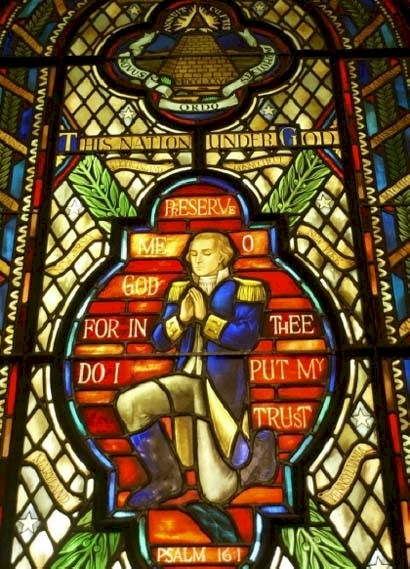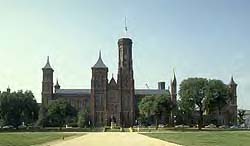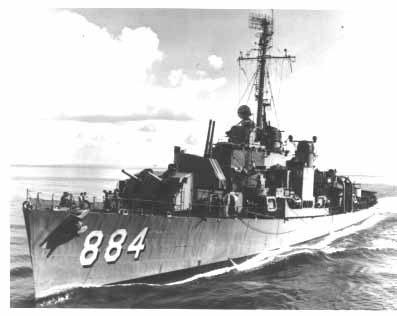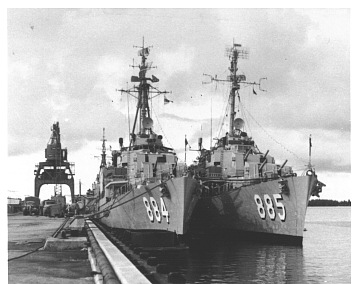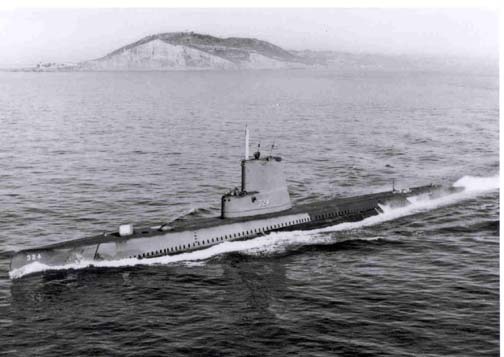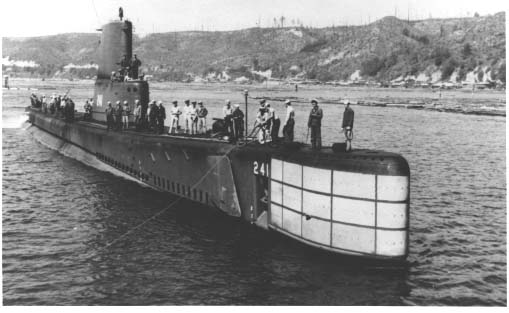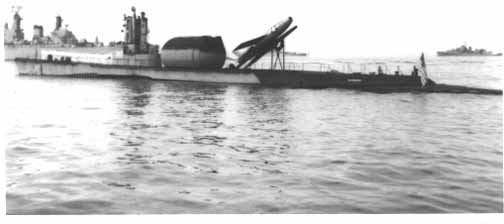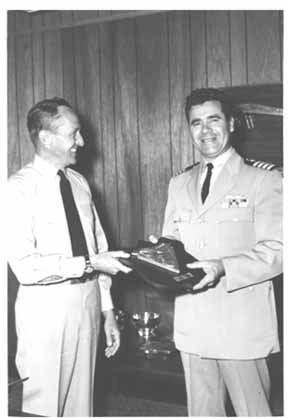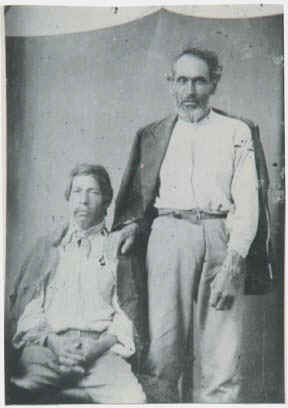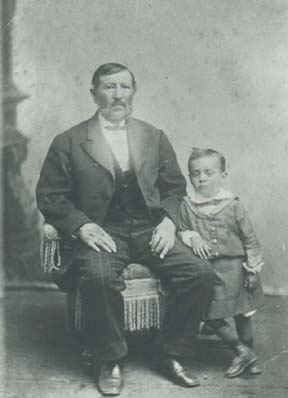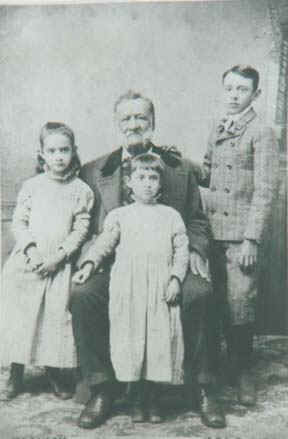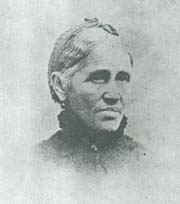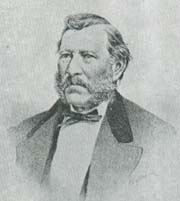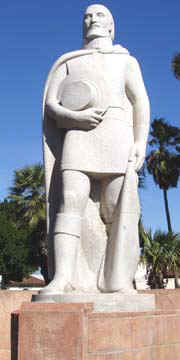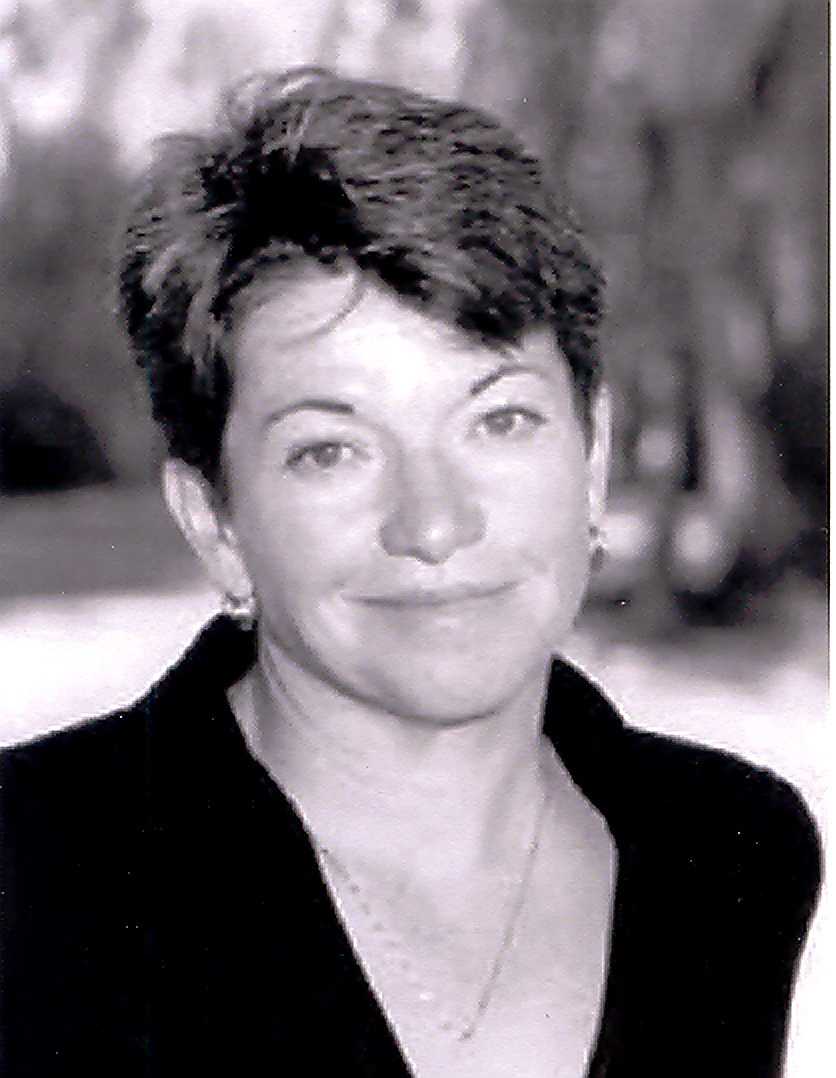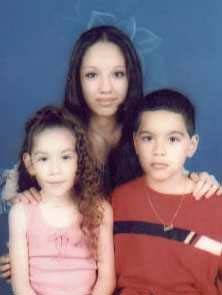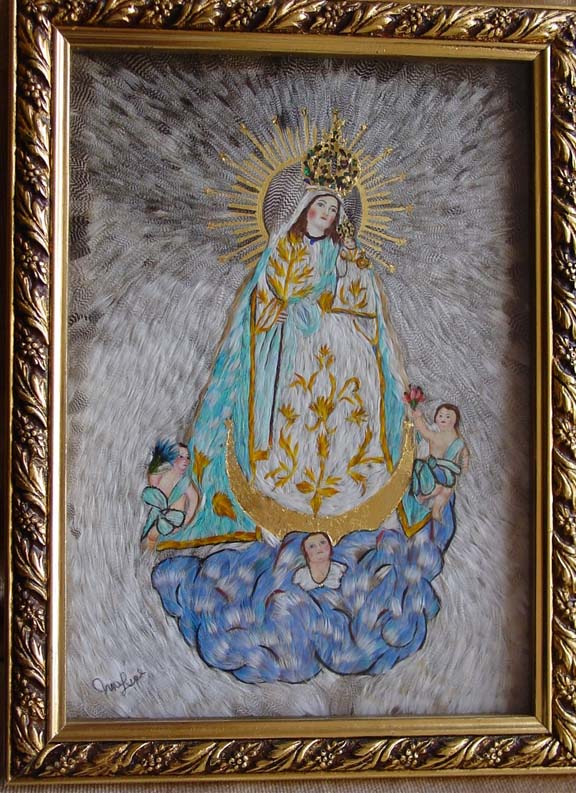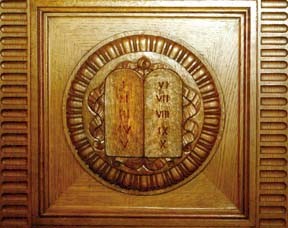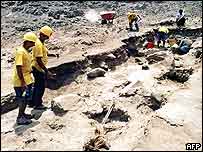|
Hispanic Nation
http://www.businessweek.com/magazine/content/04_11/b3874001_mz001.htm
By Brian Grow, with Ronald Grover, Arlene Weintraub, and Christopher Palmeri in Los Angeles, Mara Der Hovanesian in New York, Michael Eidam in Atlanta, and bureau reports.
Sent by
Dr. JV Martinez, Joe.Martinez@science.doe.gov
Dr. Refugio Rochin rochin@sacnas.org
[[There were many articles in this issue of Business Week.
Below are extracts.]]
Hispanics are an immigrant group like no other.
Their huge numbers are challenging old assumptions about assimilation.
Is America ready?
Maria Velazquez was born in a dingy hospital on the U.S.-Mexican border and has been straddling the two nations ever since. The 36-year-old daughter of a bracero, a Mexican migrant who tended California strawberry and lettuce fields in the 1960s, she spent her first nine years like a nomad, crossing the border with her family each summer to follow her father to work. Then her parents and their six children settled down in a Chicago barrio, where Maria learned English in the local public school and met Carlos Velazquez, who had immigrated from Mexico as a teenager. The two married in 1984, when Maria was 17, and relocated to nearby Cicero, Ill. Her parents returned to their homeland the next year with five younger kids. Advertisement
The Velazquezes speak fluent English and cherish their middle-class foothold in America. Maria and Carlos each earn about $20,000 a year as a school administrator and a graveyard foreman, respectively, and they own a simple three-bedroom home. But they remain wedded to their native language and culture. Spanish is the language at home, even for their five boys, ages 6 to 18. The kids speak to each other and their friends in English flecked with "dude" and "man," but in Cicero, where 77% of the 86,000 residents are Hispanic, Spanish dominates.
The older boys snack at local taquerías when they don't eat at home, where Maria's cooking runs to dishes like chicken mole and enchiladas. The family reads and watches TV in Spanish and English. The eldest, Jesse, is a freshman at nearby Morton College and dreams of becoming a state trooper; his girlfriend is also Mexican-American. "It's important that they know where they're from, that they're connected to their roots," says Maria, who bounced between Spanish and English while speaking to BusinessWeek. She tries to take the kids to visit her parents in the tiny Mexican town of Valle de Guadalupe at least once a year. "It gives them a good base to start from."
The Velazquezes, with their mixed cultural loyalties, are at the center of America's new demographic bulge. Baby boomers, move over -- the bebé boomers are coming. They are 39 million strong, including some 8 million illegal immigrants -- bilingual, bicultural, mostly younger Hispanics who will drive growth in the U.S. population and workforce as far out as statisticians can project (charts). Coming from across Latin America, but predominantly Mexico, and with high birth rates, these immigrants are creating what experts are calling a "tamale in the snake," a huge cohort of kindergarten to
thirty something Hispanics created by the sheer velocity of their population growth -- 3% a year, vs. 0.8% for everyone else.
It's not just that Latinos, as many prefer to be called, officially passed African Americans last year to become the nation's largest minority. Their numbers are so great that, like the postwar baby boomers before them, the Latino Generation is becoming a driving force in the economy, politics, and culture.
Cultural Clout
It amounts to no less than a shift in the nation's center of gravity. Hispanics made up half of all new workers in the past decade, a trend that will lift them from roughly 12% of the workforce today to nearly 25% two generations from now. Despite low family incomes, which at $33,000 a year lag the national average of $42,000, Hispanics' soaring buying power increasingly influences the food Americans eat, the clothes they buy, and the cars they drive. Companies are scrambling to revamp products and marketing to reach the fastest-growing consumer group. Latino flavors are seeping into mainstream culture, too.
The U.S. has never faced demographic change quite like this before. Certainly, the Latino boom brings a welcome charge to the economy at a time when others' population growth has slowed to a crawl. Former Housing and Urban Development chief Henry Cisneros, who now builds homes in Hispanic-rich markets such as San Antonio, says "Here we have this younger, hard-working Latino population whose best working years are still ahead," he says.
Yet the rise of a minority group this distinct requires major adjustments, as well. Already, Hispanics are spurring U.S. institutions to accommodate a second linguistic group. The Labor Dept. and Social Security Administration are hiring more Spanish-language administrators to cope with the surge in Spanish speakers in the workforce. Politicians, too, increasingly reach out to Hispanics in their own language.
What's not yet clear is whether Hispanic social cohesion will be so strong as to actually challenge the idea of the American melting pot. At the extreme, ardent assimilationists worry that the spread of Spanish eventually could prompt Congress to recognize it as an official second language, much as French is in Canada today. Some even predict a Quebec-style Latino dominance in states such as Texas and California that will encourage separatism, a view expressed in a recent book called
Mexifornia: A State of Becoming by Victor Davis Hanson, a history professor at California State University at Fresno. These views have recently been echoed by Harvard University political scientist
Samuel P. Huntington in a forthcoming book,
Who Are We.
These critics argue that legions of poorly educated non-English speakers undermine the U.S. economy. Although the steady influx of low-skilled workers helps keep America's gardens tended and floors cleaned, those workers also exert downward pressure on wages across the lower end of the pay structure. Already, this is causing friction with African Americans, who see their jobs and pay being hit. "How are we going to compete in a global market when 50% of our fastest-growing group doesn't graduate from high school?" demands former Colorado Governor Richard D. Lamm, who now co-directs a public policy center at the University of Denver.
Still, many experts think it's more likely that the U.S. will find a new model, more salad bowl than melting pot, that accommodates a Latino subgroup without major upheaval. "America has to learn to live with diversity -- the change in population, in [Spanish-language] media, in immigration," says Andrew Erlich, the founder of Erlich Transcultural Consultants Inc. in North Hollywood, Calif. Hispanics aren't so much assimilating as acculturating -- acquiring a new culture while retaining their original one -- says Felipe Korzenny, a professor of Hispanic marketing at Florida State University.
It boils down to this: How much will Hispanics change America, and how much will America change them? Throughout the country's history, successive waves of immigrants eventually surrendered their native languages and cultures and melted into the middle class. It didn't always happen right away. During the great European migrations of the 1800s, Germans settled in an area stretching from Pennsylvania to Minnesota. They had their own schools, newspapers, and businesses, and spoke German, says Demetrios G. Papademetriou, co-founder of the Migration Policy Institute in Washington. But in a few generations, their kids spoke only English and embraced American aspirations and habits.
Hispanics may be different, and not just because many are nonwhites. True, Maria Velazquez worries that her boys may lose their Spanish and urges them to speak it more. Even so, Hispanics today may have more choice than other immigrant groups to remain within their culture. With national TV networks such as Univision Communications Inc. (UVN ) and hundreds of mostly Spanish-speaking enclaves like Cicero, Hispanics may find it practical to remain bilingual. Today, 78% of U.S. Latinos speak Spanish, even if they also know English, according to the Census Bureau.
Back and Forth
The 21 million Mexicans among them also have something else no other immigrant group has had: They're a car ride away from their home country. Many routinely journey back and forth, allowing them to maintain ties that Europeans never could. The dual identities are reinforced by the constant influx of new Latino immigrants -- roughly 400,000 a year, the highest flow in U.S. history. The steady stream of newcomers will likely keep the foreign-born, who typically speak mostly or only Spanish, at one-third of the U.S. Hispanic population for several decades. Their presence means that "Spanish is constantly refreshed, which is one of the key contrasts with what people think of as the melting pot," says Roberto Suro, director of the Pew Hispanic Center, a Latino research group in Washington.
A slow pace of assimilation is likely to hurt Hispanics themselves the most, especially poor immigrants who show up with no English and few skills. Latinos have long lagged in U.S. schools, in part because many families remain cloistered in Spanish-speaking neighborhoods. Their strong work ethic can compound the problem by propelling many young Latinos into the workforce before they finish high school. So while the Hispanic high-school-graduation rate has climbed 12 percentage points since 1980, to 57%, that's still woefully short of the 88% for non-Hispanic whites and 80% for African Americans.
Meld into the Mainstream
The failure to develop skills leaves many Hispanics trapped in low-wage service jobs that offer few avenues for advancement. Incomes may not catch up anytime soon, either, certainly not for the millions of undocumented Hispanics. Most of these, from Mexican street-corner day laborers in Los Angeles to Guatemalan poultry-plant workers in North Carolina, toil in the underbelly of the U.S. economy. Many low-wage Hispanics would fare better economically if they moved out of the barrios and assimilated into U.S. society. Most probably face less racism than African Americans, since Latinos are a diverse ethnic and linguistic group comprising every nationality from Argentinians, who have a strong European heritage, to Dominicans, with their large black population. Even so, the pull of a common language may keep many in a country apart.
Certainly immigrants often head for a place where they can get support from fellow citizens, or even former neighbors. Some 90% of immigrants from Tonatico, a small town 100 miles south of Mexico City, head for Waukegan, Ill., joining 5,000 Tonaticans already there. In Miami, of course, Cubans dominate. "Miami has Hispanic banks, Hispanic law firms, Hispanic hospitals, so you can more or less conduct your entire life in Spanish here," says Leopoldo E. Guzman, 57. He came to the U.S. from Cuba at 15 and turned a Columbia University degree into a job at Lazard Frères & Co. before founding investment bank Guzman & Co.
Or take the Velazquezes' home of Cicero, a gritty factory town that once claimed fame as Al Capone's headquarters. Originally populated mostly by Czechs, Poles, and Slovaks, the Chicago suburb started decaying in the 1970s as factories closed and residents fled in search of jobs. Then a wave of young Mexican immigrants drove the population to its current Hispanic dominance, up from 1% in 1970. Today, the town president, equivalent to a mayor, is a Mexican immigrant, Ramiro Gonzalez, and Hispanics have replaced whites in the surviving factories and local schools. It's still possible that Cicero's Latino children will follow the path of so many other immigrants and move out into non-Hispanic neighborhoods. If they do, they, or at least their children, will likely all but abandon Spanish, gradually marry non-Hispanics, and meld into the mainstream.
But many researchers and academics say that's not likely for many Hispanics. In fact, a study of assimilation and other factors shows that while the number of Hispanics who prefer to speak mostly Spanish has dipped in recent years as the children of immigrants grow up with English, there has been no increase in those who prefer only English. Instead, the HispanTelligence study found that the group speaking both languages has climbed six percentage points since 1995, to 63%, and is likely to jump to 67% by 2010.
The trend to acculturate rather than assimilate is even more stark among Latino youth. Today, 97% of Mexican kids whose parents are immigrants and 76% of other Hispanic immigrant children know Spanish, even as nearly 90% also speak English very well, according to a decade-long study by University of California at Irvine sociologist Rubén G. Rumbaut. More striking, those Latino kids keep their native language at four times the rate of Filipino, Vietnamese, or Chinese children of immigrants. "Before, immigrants tried to become Americans as soon as possible," says Sergio Bendixen, founder of Bendixen & Associates, a polling firm in Coral Gables, Fla., that specializes in Hispanics. "Now, it's the opposite."
Selling in Spanish
A few companies are even going all-Spanish. After local Hispanic merchants stole much of its business in a Houston neighborhood that became 85% Latino, Kroger Co. (KR ), the nation's No.1 grocery chain, spent $1.8 million last year to convert the 59,000-sq.-ft. store into an all-Hispanic supermercado. Now, Spanish-language signs welcome customers, and catfish and banana leaves line the aisles. Across the country, Kroger has expanded its private-label Buena Comida line from the standard rice and beans to 105 different items.
As the ranks of Spanish speakers swell, Spanish-language media are transforming from a niche market into a stand-alone industry. Ad revenues on Spanish-language TV should climb by 16% this year, more than other media segments, according to TNS Media Intelligence/CMR. The audience of Univision, the No.1 Spanish-language media conglomerate in the U.S., has soared by 44% since 2001, and by 146% in the 18- to 34-year-old group. Many viewers have come from English-language networks, whose audiences have declined in that period.
The Hispanicizing of America raises a number of political flash points. Over the years, periodic backlashes have erupted in areas with fast-growing Latino populations, notably former California Governor Pete Wilson's 1994 effort, known as Proposition 187, to ban social services to undocumented immigrants. English-only laws, which limit or prohibit schools and government agencies from using Spanish, have passed in some 18 states. Most of these efforts have been ineffective, but they're likely to continue as the Latino presence increases.
For more than 200 years, the nation has succeeded in weaving the foreign-born into the fabric of U.S. society, incorporating strands of new cultures along the way. With their huge numbers, Hispanics are adding all kinds of new influences. Cinco de Mayo has joined St. Patrick's Day as a public celebration in some neighborhoods, and burritos are everyday fare. More and more, Americans hablan Español. Will Hispanics be absorbed just as other waves of immigrants were? It's possible, but more likely they will continue to straddle two worlds, figuring out ways to remain Hispanic even as they become Americans.
Why Are Latinos Leading Blacks In The Job Market?
By Roger O. Crockett in Chicago
The booming Hispanic labor force turns out to have an unexpected side effect: Latinos are outperforming blacks in the job market. Part of the reason stems from the fact that many Hispanics have less education or are vulnerable illegal immigrants willing to work for less pay. Economic and cultural factors play a role, too, say some experts, such as Latino immigrants' higher willingness to change cities to find a job. Add it up, and "many are hired to do work that blacks once had," says the Reverend Jesse Jackson. http://ads.businessweek.com/event.ng
No question, Latinos have fared better in the job market recently. Despite the recession and the jobless recovery, their employment has surged by 27% since 1999, to 17.4 million last year, according to the Bureau of Labor Statistics (charts). Meanwhile, the number of employed blacks fell by 400,000 over this period, to 14.7 million. True, the Hispanic jobless rate has climbed two percentage points since its 2000 low, to 7.7% last year. That's because Latinos have entered the labor force to look for work at a faster pace than jobs have become available. Of course, Hispanics are highly diverse, so the total stat masks the 10% jobless rate for Puerto Rican men, for example, vs. a 6% rate for Cuban men, who tend to have more education. Still, black joblessness not only has been higher than the Latino average for years but has also jumped more: three percentage points since 2000, to 10.8% last year.
Why such differences, even though there are roughly the same number of blacks and Hispanics in the U.S.? Chalk most of it up to the several hundred thousand Latinos pouring into the U.S. every year, mostly from Mexico. While many head for neighborhoods where they know someone, others have no established roots and are freer to chase jobs from California to North Carolina.
Hispanics are also more likely to work in industries that have defied economic malaise, including agriculture, construction, and services such as laundry and landscaping. Construction has added 670,000 jobs in the past three years as builders kept pace with booming demand. Fully 12.5% of employed Hispanics work in construction, while only 4.7% of blacks do.
Meanwhile, blacks have a long history of disproportionate employment in manufacturing, finance, and government -- all hit hard in recent years. Over 10% work in manufacturing, which shed nearly 1 million jobs in the past year. While 13% of Latinos work in factories, too, blacks are focused in much harder-hit durable goods such as cars, steel, and electronics. So they suffered factory-job losses of almost 500,000 since December, 2000, while Latinos, who tend to work in less affected industries, such as food processing, lost only 65,000 factory posts.
Latinos' willingness to work for less pay may play a role in their faster hiring rate, too. At $440, the average weekly earnings of Hispanics are nearly 15% less than what blacks make and 31% less than whites. A lot of that reflects Hispanics' lower educational levels. More-educated blacks have walked away from the $9 an hour offered to entry-level workers by Canyon Fireplace in Anaheim, Calif. But Hispanics "take it and run," says owner Robert D. Lewis. The outcome: More Latinos than blacks are rising with the employment tide.
Interview:
In early February, BusinessWeek Correspondent Brian Grow spoke with Graciela Eleta, 41, vice-president and general manager of P&G's multicultural-marketing team, about why the company is ramping up efforts to capture the Hispanic market and whether Hispanics are changing the way America does business. Following are edited excerpts from their conversation:
Question: You've said Hispanics are a key cornerstone of future growth in North America for Procter & Gamble. Why?
Answer: It's obvious -- the changing face of North America. Today, the ratio of people over 70 years old is one to five [for Caucasians] vs. people of ethnic origin. In the less-than-29-years-old category, the ratio is one to one. So, you can expect that a full one of every two consumers in North America will be of ethnic origin -- and about a quarter will be Hispanic.
We're looking at the multicultural arena as the wave of the future. Not participating in this growing demographic is no longer an option.
Here Come The Latino Home Buyers
Former HUD Secretary Henry Cisneros says by decade's end, this group will buy some 3 million homes, including thousands from his company
Few executives have had as varied a career as Henry Cisneros. He was the first Hispanic mayor of a major U.S. city (San Antonio). Later, he served as U.S. Housing & Urban Development Secretary under President Clinton and then as president of Hispanic broadcaster Univision Communications (UVN ) in the 1990s.
Question: Isn't the reason that builders neglected these neighborhoods because the residents couldn't afford new homes?
Answer: We're working a lot with lenders. Now they pay attention to things like the way they count rental experience, they help people correct credit problems.
The Latino population is immensely hard-working. It's low-wage, but they have two, three, or four workers per household. In Southern California, 52% had at least three workers in the home. So the whole household functions as a middle-class unit. They may work as gardeners, but when you have three people working, they live like the middle class. It's a huge phenomenon.
Question: So immigration, from your perspective, is still a good thing for the U.S.?
Answer: It's going to be one of the saving graces of our country. Japan, like Germany, France, and Italy, is worried about the aging and homogeneity of their population. They are facing negative growth scenarios. Here in the U.S., we have this younger, hard-working population, whose best working years are still ahead.
Most Americans don't recognize what an asset this is. Most people think they are less educated. They speak with an accent, but they are a huge contribution to the country.
Question: Are Hispanics changing the way America does business?
Answer: Yes. They are forcing companies to come to grips with marketing as we have known it in the past. The era of efficient marketing -- where you blanketed America with one, generic, white-bread message -- is gone. With fragmentation -- cable TV, the Internet, Hispanics, African Americans -- you really are faced with the challenge of how to touch that consumer in a cost-efficient, relevant, and timely way.
|
